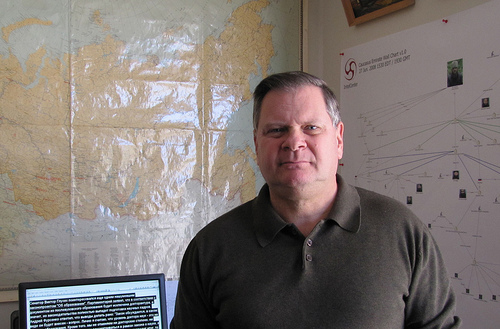
Published 20-06-2013, 14:48
Gordon M. Hahn
Ph.D. Senior Associate, Center for Strategic and International Studies (CSIS), Washington, D.C.
A special 25-page research report on the Boston Marathon attack: 'The Caucasus Emirate Comes to America: The Boston Marathon Attack' will soon be available. If you are interested in a copy please send an email request to [email protected].
EXECUTIVE SUMMARY
What I have been warning for years might happen came to pass on April 15th, 2013 when global jihadism in Russia’s North Caucasus reared its ugly head in our American homeland.The jury is still out as to whether anyone among the Caucasus Emirate (CE) mujahedin and/or the global jihadi revolutionary movement recruited Tamerlan Tsarnaev and assisted him and his younger brother Jokhar in carrying out the Boston Marathon bombing, but there is no longer a shadow of doubt that Tamerlan was inspired by the CE. Indeed, when Tamerlan traveled to Dagestan and more briefly Chechnya during a seven-month period beginning in January 2012 he was considering or seeking to join the CE’s ranks but was deterred from doing so either (1) by Salafists who convinced him to abandon the idea or (2) by the deaths of his CE contact(s). In the latter case, Tamerlan was forced to depart for Boston with the mission of the CE and other organizations in the global jihadi revolutionary movement in mind. On April 15thTamerlan and Jokhar acted in the name of that mission - to ‘defend’ Islam – from their lost Caucasus homelands to Iraq and Afghanistan.
It remains possible that a direct connection between Tamerlan and the CE will confirmed and that Tamerlan was in fact recruited by elements within the CE’s Dagestani network, the Dagestan Vilaiyat (DV). It is certain that Dagestan and the CE DV jihad influenced Tamerlan, mediated through his mother and the Internet. The same is true for Jokhar, with perhaps the added element of the Chechen cause, communicated to him through his Chechen heritage and father and the same Internet.
Towards the good, one consequence of the attack is that a small number of Western journalists are beginning to engage in some real reporting on radical Islam in Dagestan and the North Caucasus. However, academics, journalists or their editors continue to delete from their accounts any mention of the CE and its alliance with AQ and the global jihadi revolutionary alliance. Instead, the focus continues to be misplaced on ‘Chechens’ and ‘Chechnya’, when the CE jihad’s center of gravity has been in Ingushetiya (2007-2010) and Dagestan (2010-present) for six years running and has pushed out beyond Russia's borders to Belgium, Germany, the Czeck Republic, Azerbaijan and in terms of inspired plots or attacks to Denmark, Spain, France and now Boston.
Sincerely,
Gordon M. Hahn, Ph.D.
Senior Associate, Center for Strategic and International Studies (CSIS), Washington, D.C.
Dr. Hahn is author of the well-received books, Russia’s Islamic Threat (Yale University Press, 2007) and Russia’s Revolution From Above, 1985-2000 (Transaction Publishers, 2002), and numerous articles in academic journals and other English and Russian language media. He has taught at Boston, American, Stanford, San Jose State, and San Francisco State Universities and as a Fulbright Scholar at Saint Petersburg State University, Russia. He has been a fellow at the Kennan Institute and the Hoover Institution. Dr. Hahn writes and edits the bimonthly Islam, Islamism, and Politics in Eurasia Report for the Center for Strategic and International Studies archived at https://csis.org/programs/



_jpg/250px-ElbeDay1945_(NARA_ww2-121).jpg)





